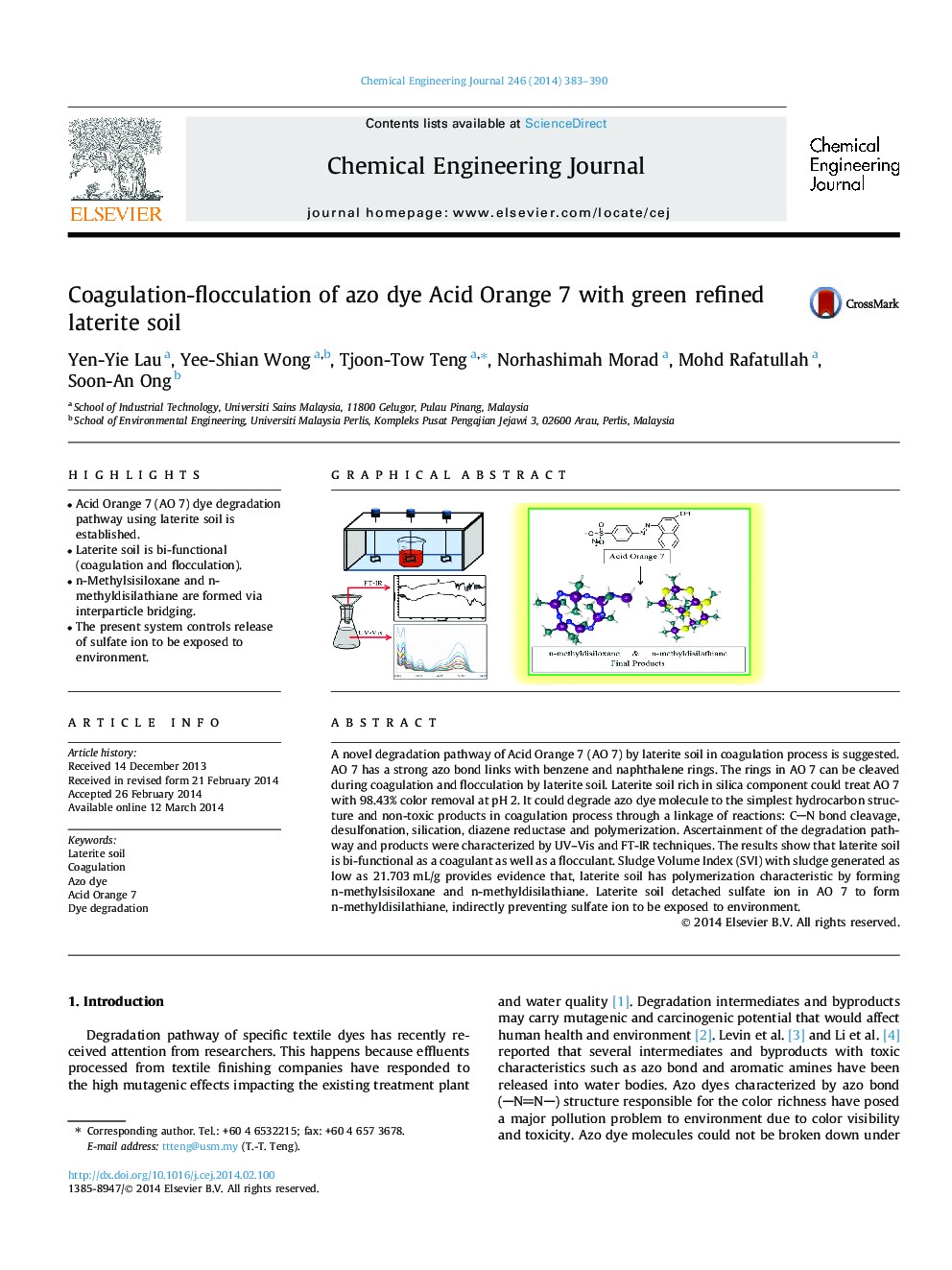| کد مقاله | کد نشریه | سال انتشار | مقاله انگلیسی | نسخه تمام متن |
|---|---|---|---|---|
| 147834 | 456400 | 2014 | 8 صفحه PDF | دانلود رایگان |
• Acid Orange 7 (AO 7) dye degradation pathway using laterite soil is established.
• Laterite soil is bi-functional (coagulation and flocculation).
• n-Methylsisiloxane and n-methyldisilathiane are formed via interparticle bridging.
• The present system controls release of sulfate ion to be exposed to environment.
A novel degradation pathway of Acid Orange 7 (AO 7) by laterite soil in coagulation process is suggested. AO 7 has a strong azo bond links with benzene and naphthalene rings. The rings in AO 7 can be cleaved during coagulation and flocculation by laterite soil. Laterite soil rich in silica component could treat AO 7 with 98.43% color removal at pH 2. It could degrade azo dye molecule to the simplest hydrocarbon structure and non-toxic products in coagulation process through a linkage of reactions: CN bond cleavage, desulfonation, silication, diazene reductase and polymerization. Ascertainment of the degradation pathway and products were characterized by UV–Vis and FT-IR techniques. The results show that laterite soil is bi-functional as a coagulant as well as a flocculant. Sludge Volume Index (SVI) with sludge generated as low as 21.703 mL/g provides evidence that, laterite soil has polymerization characteristic by forming n-methylsisiloxane and n-methyldisilathiane. Laterite soil detached sulfate ion in AO 7 to form n-methyldisilathiane, indirectly preventing sulfate ion to be exposed to environment.
Figure optionsDownload as PowerPoint slide
Journal: Chemical Engineering Journal - Volume 246, 15 June 2014, Pages 383–390
